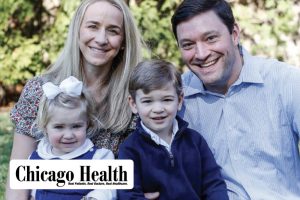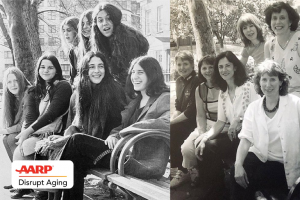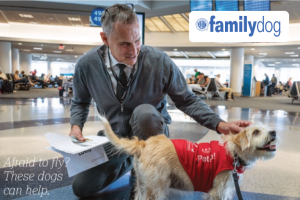Spring/Summer 2011
“They’re always smiling and asking if anything’s new,” Jonathan says of Munroe and Robin Griffey, BSN, RN, who care for him together.
Munroe says cancer treatment can be easier for children diagnosed as babies or toddlers; they spend so much time in the clinic or hospital that it becomes their routine.
“It is the older, school-age children and teenagers who have a more difficult time accepting what this means to them,” Munroe explains. She adjusts as necessary, approaching them in a developmentally appropriate way, speaking honestly, and giving choices when possible.
Humor can help. While waiting for Jonathan’s chemo to come from the pharmacy, Munroe prepares a tray containing medication to control nausea.
“I usually hold it up and say, ‘hors d’oeuvres,'” she says, hoisting the tray on her shoulder. Adds Griffey, “We make a little comedy team; we keep him laughing.”
Munroe goes back and forth between Travelyn and Cody Buzzell, a nine-year-old with a brain tumor. Cody, who lives in Maine, needs an oral dose of chemotherapy and a quick “push” of chemo through his Port-ACath. Because he can’t take pills, he will get the oral dose, in liquid form, from a syringe.
10 a.m. – Five-year-old Nathaniel Flanagan of North Kingston, R.I., is not on Munroe’s list today, but she is so happy when she hears that doctors have successfully implanted his new Port-A-Cath that she looks for him in the waiting room.
Nathaniel, who has a blood disorder called severe combined immunodeficiency, receives many medications for the side effects of a recent stem cell transplant. Munroe was often the nurse who inserted a new IV when he came in, but now medication can go directly into his port.
“No more poke, poke, poke,” Munroe says, gently lifting Nathaniel’s arm. “What do you think of your new tubie?”
“Good,” he answers, raising his yellow “Repair Crew” T-shirt to show her before turning back to his video truck game.
Back in the area where patients receive treatment in chairs or beds, Munroe can hear cries of “Owie, owie” coming from one end of the corridor, and a young person’s peals of laughter erupting from the other end.
Munroe frequently returns to her desk each shift to check her computer for patient updates and coordinate assignments with other nurses and doctors.
“We definitely work as a team,” she says. “We sit so close that we know each other well.”
Caring for an average of five patients a day, Munroe needs to organize and prioritize throughout her shift.
The group includes pediatric oncologist Laura McCullough, MD, who acknowledges that childhood cancer is every parent’s worst nightmare – and adds that it’s difficult for caregivers, too.
“It’s hard to watch kids suffer,” she says. “Sometimes they lose their battle. But you have to be the eternal optimist, and most of our kids do great.”
Munroe says that no matter what the outcome is, “I like to think that somehow I made this situation better.”
11 a.m. to 1 p.m. – While Jonathan’s infusion is finishing, Munroe and other nurses gather around and sing “Happy Last Day of Chemo to You.”
The teen has traveled here from Rhode Island with his mother, Maria, and his father, Raymond, both of whom praise Munroe’s care.
“Katie tells us about her kids, and she knows about us and our family,” Maria Travelyn says. Adds her husband, “You start talking about other things, and you get your mind off of the cancer.”
Cody Buzzell’s father, meanwhile, has helped his son onto an exam table. Munroe admires the nine-year-old’s stuffed penguin and black “Return of the Jedi” T-shirt and then asks if he wants his medicine in one or two mouthfuls.
“I think you should do it all at once,” he says.
“I like your spirit,” Munroe replies with a smile.
Cody makes a face while swallowing, but his father quickly gives him a sip of apple juice. The infusion follows without a problem.
1 to 2 p.m. – Munroe checks the computer for patient status updates and does paperwork, followed by a quick lunch in the break room with other nurses and staffers.
2 p.m. – Nicholas Barbaro lies in bed receiving IV hydration. He is waiting for a room to open at Boston Children’s Hospital, where he is scheduled for three days of inpatient chemo. Munroe monitors him and reassures his parents that a room will open soon. The seven-year-old complains only once.
Munroe and her colleagues know just how to make their patients laugh, whether they are age 6 or 16.
“Move, move, move,” he says to his father, Tony, who is blocking his son’s view of cartoons on TV. Munroe laughs.
“It’s one of the reasons I love pediatrics,” Munroe says on the way back to her desk. “Children bounce back and they’re resilient.”
3 p.m. – Nicholas’ inpatient room is now ready. Munroe wishes the parents well.
3 to 4 p.m. – She finishes up her shift with paperwork.
4:30 to 5: 30 p.m. – Munroe drives home.
“I have one of those jobs that you can’t just leave behind,” she says. “My commute allows me time to think about my patients and how I helped them, or maybe what I could have done better or differently.”
Her husband relieves the babysitter around 4:15 p.m.; he feeds the kids early on her long days, but on the others she makes something for them all to eat. Sometimes after work, she goes to the gym or runs with two other clinic nurses.
7:30 p.m. – She tucks the kids in. “I give each one an extra tight hug, well aware of how incredibly lucky I am.”



